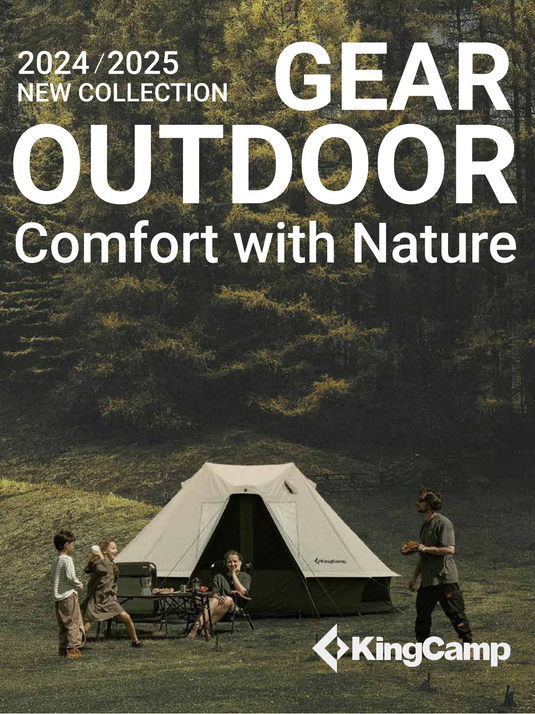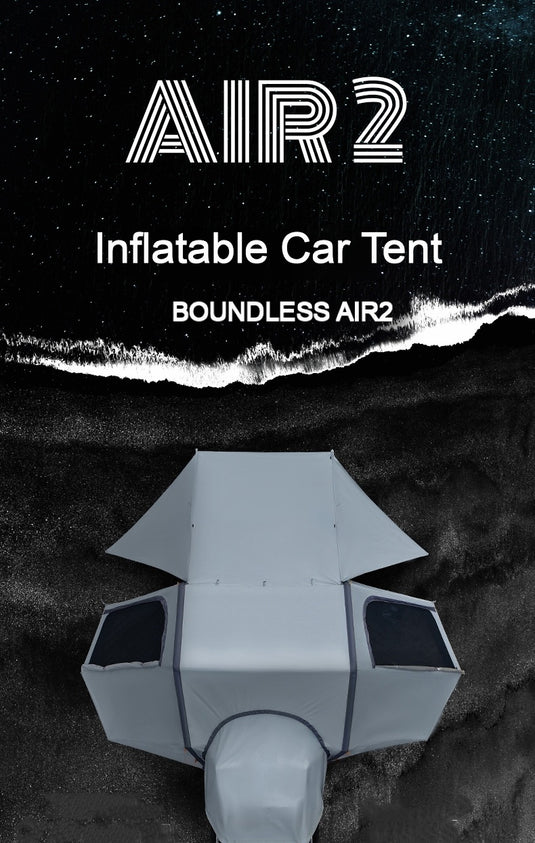Withstand The Elements: How KingCamp Tents Are Engineered To Stand Strong In Windy Conditions
Wind can turn an otherwise enjoyable camping trip into a hassle if your tent isn’t sturdy enough to handle blustery conditions. But with innovative structural designs and durable, high-tech materials, KingCamp tents are equipped to withstand even the most extreme wind gusts. In this blog post, we’ll explore the advanced engineering elements that make KingCamp tents highly wind-resistant no matter how hard the gales blow. From aerodynamic shapes to reinforced guy lines and poles, KingCamp tents will keep you comfortable and protected all night long, even in stormy weather.
Aerodynamic Shapes Shed Wind
One of the keys to creating a wind-resistant tent is choosing an aerodynamic form that allows gusts to glide smoothly overhead. KingCamp tents use curved shapes and sloped walls that don’t catch the wind like big flat surfaces.
For example, the KingCamp Wanderlust 2 tent utilizes a curved dome structure that prevents wind from becoming trapped and pressing down on any one spot. The arching front vestibule also deflects wind up and around the tent. This dome shape is intrinsically strong under the compression of wind.
Meanwhile, the KingCamp Cliff 2 tent employs a wedge-like profile that pierces through oncoming wind like the bow of a ship cutting through waves. The angled vestibule also splits gusts as they move around the tent. This aerodynamic form resists catching or trapping wind that could shake the tent.
By using domes, wedges and curved surfaces, KingCamp tents remain streamlined against the pressure of heavy winds. Their shapes allow gusts to slide smoothly overhead rather than hammering flat walls.
Reinforced Poles And Guy Lines Add Strength
While the outer form resists wind pressure, the inner poles and guy lines provide essential structural reinforcement against gusts. KingCamp tents use extra beefy poles and durable tie-down lines engineered for wind resistance.
Hefty aluminum poles like those on the KingCamp Claire 6 tent can flex in wind without snapping. Their strength comes from aircraft-grade 7001 aluminum construction and extra thickness for added stability. Reinforced attachments between the body and poles anchor the structure solidly together.
Tough guy lines like those on the KingCamp Neoair 2 tent use heavy duty polyester webbing that won’t stretch or come loose in wind. Storm flaps protect attachment points from loosening during gusts. Stake loops positioned low on the tent prevent uplift by holding the base firmly in place.
Together, the robust inner poles and stout guy lines provide a reinforced frame designed to withstand extreme outward pressure from heavy winds. This internal skeleton remains rigid even as the outer fabric flexes under gusts.
While featuring innovative engineering, KingCamp tents remain very competitively priced by utilizing cost-effective yet high-tech fabrics.
For example, the KingCamp Cave 6 tent provides ample wind resistance using coated polyester fabric rather than more expensive silicone nylon. This material resists gusts nearly as well at a fraction of the price. KingCamp can keep costs down while still delivering outstanding wind protection.
In addition, the aluminum poles used in models like the KingCamp Taga 2 tent balance lightweight properties with serious strength. By carefully controlling thickness and alloy properties, KingCamp fine-tunes pole flexibility and durability so they can resist gusts without adding excess weight. This keeps packs light while still providing essential reinforcements against wind events.
By focusing their material technology on practical innovations that enhance wind performance, KingCamp ensures reliable protection without inflating costs. Brands that spend lavishly on exotic branded fabrics often pass those expenses on to customers. But KingCamp provides workhorse materials engineered specifically to fight wind - not win fashion contests. So you get effective technology at reasonable prices.
Overall, KingCamp tents deliver category-leading wind resistance by utilizing advanced yet sensible fabrics. You get the key high-tech coatings, weaves and reinforcements where needed - without overspending just to have fancy labels. With KingCamp, performance comes first.
Durable Fabric Materials Withstand Flapping
The top-quality fabrics used for KingCamp tent skins also boost wind resistance. Coatings provide protection from the flapping and whipping motions generated by gusts.
For 3-season tents like the KingCamp Cave 6, coated polyester and polyester taffeta are common skin materials. They resist water penetration that could add weight and cause sagging in windy conditions. Their high thread counts increase tear resistance as gusts whip the fabric back and forth. Seam tape construction prevents potential puncture points.
On 4-season tents like the KingCamp Cliff 2, thicker ripstop nylon is often used for even greater abrasion and puncture resistance, while remaining lightweight. The ripstop weave prevents tiny tears from growing larger under repeated wind stress. Durable water repellent (DWR) coatings cause droplets to bead up rather than soak in and add weight.
Thanks to smart fabric choices, KingCamp tents maintain their wind-shedding tautness over time rather than stretching out or developing holes from flapping. Their skins stand up to the assault of blustery conditions.
Ventilation Options Prevent Buffeting
Strategically placed vents provide another key defense against wind by releasing pressure and preventing buffering within tents.
The KingCamp Wanderlust 2 tent uses adjustable roof vents to let gusts flow smoothly through the tent interior. This stops wind from hammering outward and causing the walls to bow and flex excessively. The mesh doors can also be opened partially as a pressure release.
On the KingCamp Neoair 2, low vents near the vestibule allow air exchange while preventing rain or snow from entering. These protected openings let gusts pass harmlessly under the tent floor.
By venting wind pressure, KingCamp tents resist billowing and buffeting forces that could loosen seams or break poles over time. The vents release gusts in a controlled fashion.
Whether you’re facing ocean gales or mountaintop gusts, KingCamp tents have you covered in even the most extreme wind conditions. Their smart aerodynamic shaping, reinforced skeletons, and vented fabrics are engineered to withstand whatever the winds can throw at them. So you can relax through the bluster knowing your KingCamp tent will keep you cozy within its wind-hardened walls. With their storm-ready designs, KingCamp tents open up new horizons for camping in windswept landscapes from Patagonia to Scotland. Just stake them down, hunker inside, and let the gales pass overhead.




